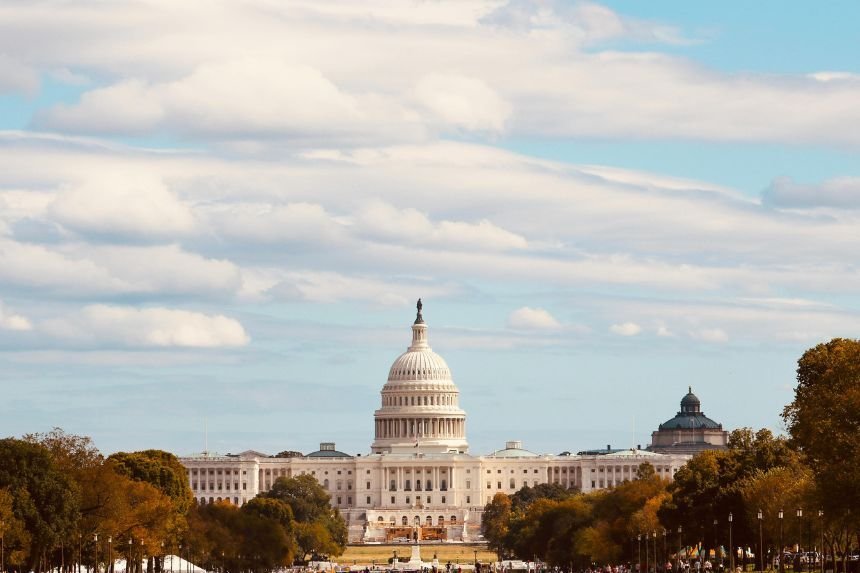What Led to the U.S. Government Shutdown Deal?
After forty-one tense days of political gridlock, the U.S. government shutdown deal was finally reached late Monday night. Lawmakers in both chambers came together to approve a short-term funding measure, ending the prolonged stalemate that had halted federal operations and disrupted public services. Read another news on globzette.com.
- What Led to the U.S. Government Shutdown Deal?
- Senate Funding Approval Vote and the Road to Compromise
- What Was Included in the Bipartisan Proposal?
- How Did Lawmakers Respond to the Funding Bill?
- What Does the Deal Mean for Federal Employees and the Economy?
- Political Tensions and Future Budget Talks
- How Senate Republicans Secured the Final Vote
- Conclusion
- FAQs
The Senate’s passage marked a rare moment of bipartisan cooperation amid months of fiscal tension. The funding bill ensures government operations continue while long-term spending negotiations proceed. Senators Tim Kaine and Katie Britt spearheaded the bipartisan proposal that paved the way for the compromise, emphasizing stability over partisanship.
Senate Funding Approval Vote and the Road to Compromise
The Senate held a critical vote that secured passage of the U.S. government shutdown deal, restoring confidence in Washington’s ability to avert deeper economic strain. The final count reflected strong cross-party cooperation, with a majority of Republicans and Democrats supporting the temporary measure.
The approved legislation extends government funding through the coming months, allowing more time for U.S. government budget negotiations. This Senate funding approval vote demonstrated growing concern across party lines about the shutdown’s impact on federal workers and essential services.
Lawmakers cited the need for continuity and accountability, stressing that public institutions could not afford further disruptions.
What Was Included in the Bipartisan Proposal?
At the heart of the deal was a Tim Kaine and Katie Britt bipartisan proposal, which proposed a short-term extension to federal spending. The bill ensures that government operations remain functional while broader debates over fiscal priorities continue.
The short-term funding extension bill provides stopgap funding for major departments, covering defense, healthcare, and education. The Congress deadline for federal funding was narrowly met, avoiding a lapse that could have further delayed critical programs and payments.
This cross-party Senate compromise showcased a pragmatic approach—prioritizing stability over political grandstanding. It included modest adjustments in discretionary spending and introduced measures to protect essential federal functions.
How Did Lawmakers Respond to the Funding Bill?
Reactions to the U.S. government shutdown deal were divided but cautiously optimistic. Many lawmakers welcomed the move as a necessary step toward fiscal balance. However, a faction of senators—nine in total—opposed the measure, expressing concerns over the lack of spending cuts.
The Republican and Democratic reactions reflected the broader ideological divide in Congress. Supporters praised the federal spending legislation 2025 for keeping the country running, while critics warned it merely postponed deeper budget disputes.
The Senate roll-call vote on the funding bill revealed that even amid partisan friction, consensus was possible. The President’s stance on the funding agreement was supportive, highlighting the importance of bipartisan problem-solving to prevent future shutdowns.
What Does the Deal Mean for Federal Employees and the Economy?
The passage of the U.S. government shutdown deal was a major relief for federal employees who had been working without pay or on furlough. Agencies began reopening on Tuesday morning, with operations gradually returning to normal.
Economists noted that the extended shutdown had cost the U.S. economy billions in lost productivity and public confidence. The effect on U.S. government workers was immediate, as back pay and delayed services resumed.
Analysts believe this fiscal policy compromise deal signals a growing willingness in Congress to prioritize national stability. However, experts also cautioned that the federal funding impasse could return unless a long-term budget framework is reached.
Political Tensions and Future Budget Talks
Although the immediate crisis has ended, Capitol Hill budget negotiations remain complex. Lawmakers face new hurdles in the coming weeks as they deliberate on defense allocations, social programs, and tax reform.
Trump and Japan Critical Minerals Deal Strengthens Supply Chain
The Senate discussions on budget expansion will likely reignite partisan debates over fiscal priorities. Despite this, leaders from both parties have vowed to continue dialogue, signaling cautious optimism for broader reform.
The political friction over spending measures remains evident, with conservatives pushing for stricter spending limits while progressives advocate for expanded funding in healthcare and education.
How Senate Republicans Secured the Final Vote
The turning point came when key moderates within the GOP sided with Democrats to pass the U.S. government shutdown deal. Their support proved decisive in ending the standoff and reopening the government.
This cooperation showcased a new willingness among senators to act in the national interest despite partisan divisions. Observers credited the lawmakers’ late-night agreement for averting another prolonged closure that could have further strained the economy.
Conclusion
The U.S. government shutdown deal marks a significant, if temporary, victory for bipartisanship in Washington. The Senate’s decision to approve a stopgap funding measure prevented further economic damage and restored public faith in the nation’s institutions.
While federal workers and citizens can now breathe easier, challenges remain. Lawmakers must still address deep-rooted disagreements over long-term fiscal policy. The path forward will require consistent dialogue, accountability, and compromise to prevent another shutdown.
This moment demonstrates that collaboration remains possible—even in a polarized Congress—when the nation’s stability is on the line.
FAQs
- What was included in the U.S. government shutdown deal?
It included a temporary funding extension allowing agencies to operate while broader budget discussions continue. - Who led the bipartisan shutdown proposal?
Senators Tim Kaine and Katie Britt were key architects of the compromise. - How long will the new funding bill last?
The short-term bill funds the government for several months, preventing an immediate shutdown. - How did the vote to end the shutdown pass?
The Senate passed the deal with bipartisan support, despite opposition from nine senators. - What happens next after the deal?
Congress will continue negotiations to finalize a long-term budget plan before the next funding deadline.








